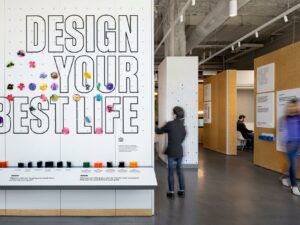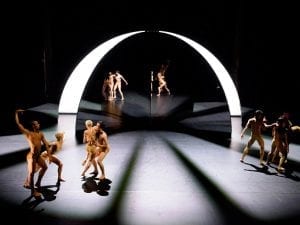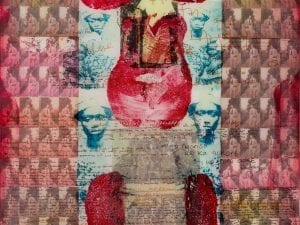In 2016, Keith Harrison was awarded a £30,000 commission through the Jerwood Open Forest initiative – a collaboration between Jerwood Charitable Foundation and Forestry Commission England with the support of Arts Council England. The commission – Joyride – is a community focused live event, which pays homage to the automotive industry in the West Midlands. The artist is working with industrial sculptor and model maker Anthony Tovey to create a clay replica of the final Rover 75 to leave the Longbridge carplant in Birmingham. On 30 September, the car will be transported from its place of making (Bournville College) to Cannock Chase where it will be ceremonially released from a ten-metre ramp, into the unknown. Keith Harrison and Anthony Tovey discuss the making process and the personal significance of Joyride.
KH: Joyride will link to two significant places – Bournville, the former Longbridge car factory, and Cannock Chase, the first wilderness I visited as a child. A key aspect of the project is to work with Anthony to remake (in clay) the last Rover 75 to come off the production line at Longbridge in 2005. We’ll be recreating it here at Bournville College and then taking it to Cannock Chase Forest’s Tackeroo site where it will be launched from the highest point of a ten-metre high ramp. We’re going to release the car at dusk (6.57pm), referencing the transitioning role for the car between daytime and night.
A: You’re going to play a central role in modeling the clay Rover 75. Could you tell us a bit about your background as a car model maker?
AT: I was an Austin apprentice originally, working within 20 metres of where we’re sat now actually. I did an engineering apprenticeship and then I became a pattern maker for 16 years before starting at the British Leyland design studio. The first thing I worked on was the Austin Metro – a fine car. The studio eventually went over to Cranleigh in the Coventry area. I was there until 1986 working on prototype vehicles mostly. I left after 25. I’ve worked with a range of creatives when modeling cars, from artists and jewellery makers to designers – all adapting their skills and bringing new perspectives and approaches.
A: Typically how is clay used in the production of prototype vehicles?
AT: Well the clay that Keith and I will be using has been sourced from the nearby River Rea, which runs through Longbridge and the estate where Keith’s parents still live.
KH: It’s very different from the clay that Anthony would normally use.
AT: I’d use a variety of waxes, generally brown because the neutral colour allows you to see the form of the car clearly. The clay would be softened in an oven and once malleable, hand tools would be used to shape the car. Today of course, the process has changed somewhat and computer aided design has become a central tool – the cars are now CNC milled.
A: Could you take us through the steps of the making of the replica Rover 75?
KH: You would normally start with a series of drawings but because all of the original drawings are in China, where production of the Rover actually took place, we didn’t have access to these. Instead, working with Capture Point UK, we created a dynamic 3D scan of the final Rover 75. Although the car we scanned wasn’t the last car to leave the production line (this in in the Motor Museum in Gaydon), it is certainly the last model.
Capture Point took a scan of the car and broke it down into profiles, front to back and left to right. This gave us the main structure for the plywood body which has now been assembled and placed on top of a steel chassis complete with original Rover wheels. Anthony and I will start applying the clay this week – it won’t look like a traditional clay model as used in the industry because we are going to expose the materials to communicate a sense of construction. You’ll see some of the plywood structure coming through and there’ll be evidence of the steel chassis as well as visible fingerprints in the clay façade.
AT: We’re adapting a very old process of making a wooden buck and using this as a hammer form on which to fit the sheet metal.
KH: We’re going way back and adapting the process.
A: Anthony, you must feel like you’re coming full circle. You started your career here at Longbridge as an apprentice and now you’re back on site working with Keith – a ceramicist.
AT: Yes, I suppose it’s a bit strange to come back – within metres of where I started. But I’m looking forward to using new materials and learning from Keith’s expertise, looking at the process from a ceramicist’s point of view.
KH: There is a lot of overlap when it comes to the making process – materials and terminologies of concept and idea are very similar across both the car industry and ceramics. Vehicle production requires a team and this definitely feels like a team project.
A: It’s exciting to know the clay is being sourced from the River Rea. Are any of the other materials being sourced locally?
KH: We’ll use some of the original parts from the Rover 75 for the replica model, such as the wheels and the radio. The other side of the material story is related to Cannock Chase. The ramp that we’ll be launching the car from will be made using thinnings from Cannock Chase Forest – thinnings are small trees which are a byproduct of forestry. I looked at other options for creating the ramp structure like bamboo, but thinnings seemed like the right choice because they’re from the immediate area. After the event, the felled wood will be reused, transformed.
A: Do you see Joyride as a celebration of the car manufacturing industry?
KH: Yes in a way it’s a celebration of something that has passed, but also an elegy. I want to reflect on the car’s relationship with both Longbridge and Cannock Chase, and it’s not always an easy relationship.
A: Anthony: it’s interesting because your career began here at Longbridge and Keith, your Mother and Grandfather worked here too – it’s very personal for both of you.
KH: There are many personal connections. My Mum and Granddad lived just around the corner and Anthony was born just down the road. This area is embedded in all aspects of Joyride.
Booking is now open for Joyride which will take place at Cannock Chase Forest on 30 September, visit jerwoodopenforest.org for more information.
Credits:
1.Keith Harrison, Joyride, a Jerwood Open Forest Commission. Supported by Jerwood Charitable Foundation, Forestry Commission England and Arts Council England. Image courtesy of the artist.





